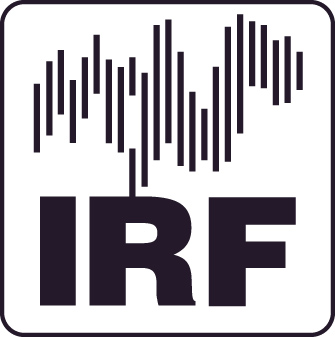
Optical Auroral Research
Diffuse aurora - structure, cause and magnetosphere-ionosphere interaction
Ingrid Sandahl (in memoriam 1949-2011),
Urban Brändström
(PI, project manager)
and
Timophey Sergienko (CoI).
Funded by the Swedish Research Council, for the period 2011-2013
Abstract
The diffuse aurora provides the largest part of the energy input to the ionosphere (70% or more) even during disturbed ionospheric
conditions. In spite of this it has received much less attention from the scientific community than the other main auroral class,
discrete aurora, and is not nearly as well understood. By measuring the detailed optical behaviour of diffuse aurora simultaneously
on different spatial scales we will contribute to the understanding of its cause and effects, in particular its spatial and temporal
structure. It is now known that the diffuse aurora can contain much fine structure, but it is not known if this is a general property.
There is at present no good theoretical explanation for the fine structure. An attempt to develop a theory will be made in collaboration
with the Polar Geophysical Institute in Apatity. The relationship between diffuse aurora and other auroral forms involving pitch angle
scattering in the plasma sheet, such as pulsating aurora and certain types of black aurora, will also be investigated. We will use
optical data from ALIS (Auroral Large Imaging System) at four wavelengths, an EMCCD imager, data from other ground-based
instruments including EISCAT, and satellite data. Ionospheric modification experiments using the EISCAT heating facility will also
be performed.
Further information
- 2011-2013: Diffuse aurora - structure, cause and magnetosphere-ionosphere
interaction
(full-text PDF
1MB, mostly in English, see appendix A for research programme).
-
The Auroral Large Imaging System (ALIS)
Project website.
- Previous granted applications:
- 2005-2007: Fine structures of optical
emissions from phenomena in the ionosphere investigated using 3D
tomographic spectroradiometry (full-text
PDF, 1MB).
- 2002-2004: Study of the
fine-structure of the auroral ionosphere/thermosphere by 3D optical
tomographic technique. (full-text PDF not available,
further info
in swedish)
Created:
2004-11-23/
UB. Last change: urban*irf.se, 2013-02-12
.



